31 Days, 31 Lists: 2019 Fairytales, Folktales, and Religious Tales

One of my favorite lists is debuting today. As I’ve mentioned many times before, in the past fairytales, folktales and religious tales made up a large portion of a children’s librarian’s purchasing budget. They used to be plentiful in the book market. Plentiful, and chock full of white people appropriating the tales of other cultures. Sorry, guys. Just telling it like it is. The good news is that we’re a lot more careful these days about who does the telling. The bad news is that there are a lot fewer tales to choose between when you’re in a purchasing mood.
When I worked for New York Public Library there were strict rules about whether or not “original” fairy and folktales could be included on such a list as this one. Me? I figure we need as many titles as we can get, and some of the original tales you’ll see here (from such books as Chelm for the Holidays or The Singing Rock) more than deserve their inclusion here today.
ADVERTISEMENT
ADVERTISEMENT
Enjoy!
Chelm for the Holidays by Valerie Estelle Frankel

A rather clever idea for a book, if I do say so myself. Ten different Jewish holidays are elegantly paired with ten different Chelm tales of utter foolishness. If you know me then you know I like a good fool tale. The more foolish the better! I wish there was a little more supplemental explanation here of whether or not Frankel made these up or based them off of existing tales. They sure didn’t sound familiar to me (I particularly liked the one about skating in the barn with soap). I just happened to find them a lot of fun.
Cinderella Liberator by Rebecca Solnit, ill. Arthur Rackham

If you carefully created a book in a lab you could hardly make one as perfect for me as this. First off, I love the work of Arthur Rackham (1867-1939), one of the great British illustrators of all time. Then to have Solnit (best known, until now, for such books as Men Explain Things to Me) turn around and examine the familiar Cinderella tale with a feminist gaze is marvelous. The book tweaks Cinderella and the choices she has given to her heroine are keen. There’s a lot to pick apart here BUT it’s also just a really good modern fairy tale. Rackham ties it to the past, though this is the Cinderella of the future.
The Fox Wife by Beatrice Deer, ill. D.J. Herron

An Inuit retelling gets imagined anew. Inhabit Media specializes specifically in Inuit words and voices, and this book is available in both Inuktitut and English. Author Beatrice Deer is a Canadian Inuk singer from Quaqtaq, Quebec. We’ve seen the tale of the wife that forgoes a skin, whether willingly or unwillingly, in a variety of different tales. Here the choice is entirely her own, and her reasons for leaving pretty darn realistic (she figures if the man can’t handle her scent then he’ll never love the fox she truly is). A particularly good book for fox lovers as well.
Ghost: Thirteen Haunting Tales to Tell by Blaise Hemingway and Jesse Reffsin, ill. Chris Sasaki and Jeff Turley

There are only thirteen true ghost stories in the world. Are you brave enough to read them all? Beware, you might find the last one involves you. It seems very appropriate that this book would be released the same year as Scary Stories to Tell in the Dark (the film). This book provides precisely the right dark thrills I would have required as a kid. Mind you, the tales here are much scarier than anything Scary Stories was able to conjure up. The art is creepy but beautiful/creepy and some of these tales really pop! Loved the one about ice fishing and the one in the sunken ship. My sole objection is the spider story. The authors made the very poor decision to refer to the spider person as shiny and black, which does not fly in this day and age. Definitely worth a read besides that. Walks an elegant line between horror and kid-friendly.
Good Night Wind by Linda Elovitz Marshall, ill. Maëlle Doliveux

Inspired by the Yiddish folktale “Der Vint, Vos Iz Geven In Kas” (“The Wind Who Got Angry”) this is a beautifully illustrated take on an oddly sympathetic character. Who knew you could feel so bad for a freezing wind? This cut paper medium is just magnificent.
Hephaistos: God of Fire by George O’Connor

Is it weird that I have a thing for Hephaistos now? It’s weird, right? And man, the guy is having a banner year. Between this book (the latest in George O’Connor’s Olympians graphic novel series) and Julie Berry’s Lovely War, the guy keeps coming up. This is my preferred rendition of him, though. He’s so sweet. Makes me want to find all the other Olympians books whenever he appears.
Hillel Takes a Bath by Vicki L. Weber, ill. John Joven

According to the “Note for Families” at the end of this book, Hillel was a real rabbi “and Jewish tradition tells many stories about him.” I wasn’t expecting the level of fun and, dare I say, whimsy to this story. It’s rather remarkable too because it’s a tale about self-care. I don’t know about your library, but mine doesn’t have shelves popping with religiously-minded picture books about being kind to yourself, all tied into traditional storytelling. Weber takes a light hand to the source material and Joven does it justice. It’s not fancy, and it may not catch the eye of the Sydney Taylor Award committee, but I hope folks find it in some way. It’s a special one.
I Am Hermes! Mischief-Making Messenger of the Gods by Mordicai Gerstein

Lest you feel you need to have read its predecessor, I Am Pan!, to understand this book, how wrong you are. It’s particularly fun to read this book after you’ve read Hermes by George O’Connor. A lot of the tales repeat, though by no means all of them. Gerstein (whom we lost this year) had a great style and you just have to see the amazing Bibliography at the back of the book. This guy knew what he wa doing! Wonderfully hilarious from tip to toe.
Lion and Mouse by Jairo Buitrago, ill. Rafael Yockteng, translated by Elisa Amado
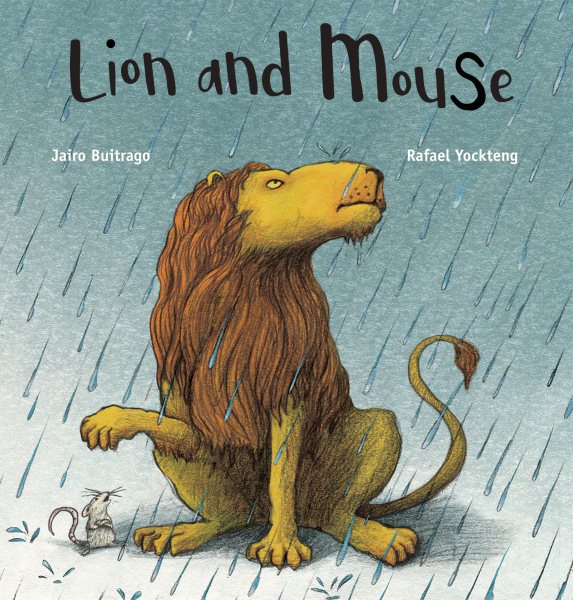
Huh! Never seen the old story done in this particular way before. I found this a take on the tale that is both faithful and utterly original in its eventual moral lesson. This isn’t about underestimating your friends so much as it’s about doing good for others’ sake rather than your own.
The Little Green Hen by Alison Murray

Who will help the hen tend her apple tree and why are trees important in terms of regulating floodwaters? The classic story of The Little Red Hen with an environmental kick. One thing that’s always bugged me about adaptations of The Little Red Hen is how she does all that work and then the lazypants animals get to share in the rewards anyway. Murray’s gentle hand takes a different tactic. First off, loving that retro style to the art (I know it’s all digital, but it feels like this was produced in 1952). Then there’s the infinitely clever way that the book explains why the hen tends her tree, the logic behind who helps her out, and then there’s this kicker where she manages to explain on a really young level how the presence of trees helps prevent erosion and flooding during rainstorms. Color me impressed.
The Magic Flute by Chris Raschka

Raschka brings to vibrant life Mozart’s most kid-friendly opera. Join Prince Tamino as he sets out to rescue The Queen of the Night’s daughter Pamina, assisted by Papageno the bird catcher and more. Folktales. Fairy Tales. Religious Tales. Opera Tales? Well, heck, I didn’t know where to put this. I don’t even know if it’s brilliant or just plain weird. I guess you could say the same for the opera itself. And I am grateful to Raschka for finally explaining the plot to me (which, seeing it written down, is pretty bizarre). This book will go over HUGE with those parents that are trying to inculcate their children in the finer things in life (read: opera). And Raschka’s got the artistic chops.
Mythologica by Steve Kershaw, ill. Victoria Topping

Because sometimes you just want a book that’s cool. And this “encyclopedia of gods, monsters, and mortals from ancient Greece,” is precisely that. Cool. That’s due in large part thanks to artist Victoria Topping who does a lot of record covers and other types of collage and mixed media. Sometimes, admittedly, the book is almost too hip for its own good. I’d consider this a supplemental title for anyone already familiar with these myths, rather than the first source they’d go to. I do appreciate the design, which is enjoyable to read. It could probably fit in very well in a teen space too, come to think of it. Oh. And if you have a spare 100 pounds in your pocket, you can buy a print from the book here.
Noodleheads: Fortress of Doom by Tedd Arnold, Martha Hamilton and Mitch Weiss

This is the fourth Noodlehead book so far, and I’m still fascinated by what these books do. Essentially, they take old folktale elements and modernize them in just the weirdest of ways. In this book Arnold, Hamilton & Weiss tackle the concept of Liars’ Contests, something I enjoyed in Patricia McKissack’s Porch Lies: Tales of Slicksters, Tricksters, and Other Wily Characters way back in 2006. In the intervening 13 years I haven’t really seen another book include lying contests in the text, so this was a very pleasant surprise. Once again, Noodleheads knocks it out of the park.
The Parrot and the Merchant: A Tale by Rumi, illustrated by Marjan Vafaeian, translated by Azita Rassi

If the title sounds familiar, that may be because this tale was adapted into a picture book around 2010 called The Secret Message by Mina Javaherbin. I loved that book, but I’m quite drawn to this one too. Vafaeian is Iranian, and made it a point to cast the merchant in this story as a woman, which I thought was interesting. It helps that it’s a strong fable too.
The Pear Tree retold by Luli Gray, ill. Madelyn Goodnight

The more I thought about it after reading it, the more I came to like and respect this folktale adaptation by the now deceased Gray. You are probably familiar with this story in some respect. An old woman owns a pear tree that can trap people in its branches until she releases them. When death comes for the woman, she traps him, only letting him go after a long period of time. We actually saw an odd little adaptation of the same story last year (though it was significantly less kind than this one) called Old Misery by James Sage, illustrated by Russell Ayto. What’s so interesting about Gray’s take is that she gives the old woman a heart. Hearing about the suffering of people who cannot die allows her to free death, even if it means her own end. I was particularly taken with the fact that everyone has to become vegetarian because the animals that are cut up won’t die. Never seen that idea before!
Red Riding Hood retold by Beatrix Potter, ill. Helen Oxenbury

To the untrained eye, the idea of putting together Potter and Oxenbury would be akin to melding frosting with sugared sprinkles. Sweetness upon sweetness, no? For such innocent readers, Potter’s retelling is going to come as a bit of a shock to the senses. Indeed, in her Foreword to the book, Oxenbury says as much. “… it’s much closer to Charles Perrault’s original French story – with a darker ending.” Potter, remember, wasn’t the cutesy critter you see in lamentable bios like that one starring Renee Zellweger. She could be cutting and, a born naturalist, she harbored no illusions about the cruelty of nature (see: Scary Stories for Young Foxes). Oxenbury, to her credit, softens the blow that comes at the end of this book with a visual coda of her own, but for my part I was most taken by her rendering of the wolf. We’re used to natty wolves. Less so the wolves that look slightly down on their luck. His pants appear to be held up by a rope, and his shirt just hangs off of him. Still, his duck-headed cane and saddle shoes belie better times, long past. He’s a cunning villain, but you don’t quite root for him. No mean task. This book is a perfect pairing with Yummy by Lucy Cousins (another fairy tale collection where the cuteness of the artist misleads you into thinking the stories will match tonally).
Riding a Donkey Backwards: Wise and Foolish Tales of Mulla Nasruddin, retold by Sean Taylor and the Khayaal Theatre, ill. Shirin Adl

Trickster or fool? Twenty-one classic tales from Muslim cultures follow the adventures of Mulla Nasruddin, illustrated with a great deal of flare and humor. Yay! Wise fool tales! They can be difficult to reinterpret into a picture book format but I like what Taylor, the Theatre, and Adl pull off here. A great mix of different kinds of art styles. Some of the tales are stronger than others, sure, and some will sound familiar (can you find the one that crops up in Fiddler on the Roof?) but one or two actually made me snort when I read them. I can’t help it. I like this funny little collection.
Right Side Up: Adventures in Chelm by Eric A. Kimmel, ill. Steve Brown

How appropriate! Pairing this book of fool stories with Mulla Nasruddin just makes sense (to say nothing of Noodleheads). Of course the book this REALLY goes well with is the aforementioned Chelm for the Holidays. What’s nice is that these two looks at Chelm come at it from different directions. Kimmel’s is a more contemporary telling, and I like that the art in the book is multiracial. After all, as Kimmel says in his Author’s Note, “no race, religion, nationality, or gender has a monopoly on foolishness.” Great stories, told well, and funny to boot.
The Singing Rock & Other Brand-New Fairy Tales by Nathaniel Lachenmeyer, ill. Simini Blocker

ADVERTISEMENT
ADVERTISEMENT
Tested this one out on my kids and while they liked all of them the clear favorite was “The Sorcerer’s New Pet”. I’m a sucker for fairy tales rendered into a comic form. Now the puritan that lurks inside of me would prefer that the book use real fairy tales, but honestly I like these original ones, and I see no reason not to potentially include them. Very fun.
Tiny Feet Between the Mountains by Hanna Cha

Okay, I’m going to have to do some major tap dancing to justify this one in this section. Because what we have here is a genuine, honest-to-goodness, original folktale on our hands. Cha makes no bones about that fact. Her Author’s Note at the back mentions how the tiger has historically been viewed in Korea, but she never lays claim to this being a real story. That said, I was just so charmed by the dang thing that I knew I had to put it somewhere. This is Cha’s debut, I believe, and she has this exquisite handle on pen and ink and watercolors (with some Photoshop thrown in there for spice). But while I like the story (tiny girl aids monster big tiger) I love the physical characteristics and personalities of the characters. Keep an eye on Hanna Cha. One to watch.
Vasilisa the Wise and Other Tales of Brave Young Women, retold by Kate Forsyth, ill. Lorena Carrington
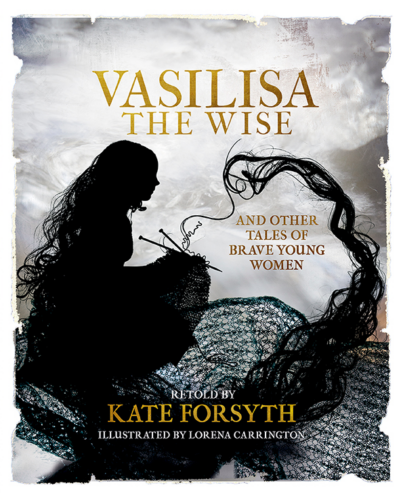
Seven ancient fairytales showcase strong girls and women that get themselves out of heaps of trouble using brains and bravery. Each tale is accompanied by magnificently evocative photographed silhouettes that heighten each story’s excitement and foreboding. A lot of time and love and attention went into, not only the selection of these stories, but the elements that were tweaked slightly (ever so slightly) for a contemporary audience. I’m a sucker for too little lauded fairy tales anyway, so this was already up my alley. I appreciated that it never sacrificed the macabre elements. Just add in the fact that the photographic images accompanying the book are strange and beautiful and creepy all at once, and I’m sold. We see a lot of “strong girl” book collections out right now. Let’s put a book on our list that gets right down to the source of the matter. Extra points for the story Carrington tells at one point about a gift from some friends who told her, “We brought you a present!” and then gave her a full fox skeleton they’d found.
The White Snake: Based on a fairy tale by The Grimm Brothers by Ben Nadler

When a poor servant boy is sent by a mad king to spy on his rival, he has no idea of the epic quest he’s begun. A comic book rendering of a classic Grimm fairytale. Oh, Nadler was such a strange choice for this adaptation, but as I read I started to really get into his freaky-deaky psychedelic style. This is definitely in the same style as last year’s The Dragon Slayer, right down to the copious endmatter and Bibliography. I love classic weirdo Grimm so I was on board with this (and on board with the explanations at the end about why they changed the story in the ways that they did). Might not be everyone’s cup of tea, but throwing it out there.
Interested in the other lists? Here’s the schedule of everything being covered this month. Enjoy!
December 1 – Great Board Books
December 2 – Board Book Reprints & Adaptations
December 3 – Transcendent Holiday Picture Books
December 4 – Picture Book Readalouds
December 5 – Rhyming Picture Books
December 6 – Funny Picture Books
December 7 – CaldeNotts
December 8 – Picture Book Reprints
December 9 – Math Books for Kids
December 10 – Bilingual Books
December 11 – Books with a Message
December 12 – Fabulous Photography
December 13 – Translated Picture Books
December 14 – Fairy Tales / Folktales / Religious Tales
December 15 – Wordless Picture Books
December 16 – Poetry Books
December 17 – Easy Books
December 18 – Early Chapter Books
December 19 – Comics & Graphic Novels
December 20 – Older Funny Books
December 21 – Science Fiction Books
December 22 – Informational Fiction
December 23 – American History
December 24 – Science & Nature Books
December 25 – Unconventional Children’s Books
December 26 – Unique Biographies
December 27 – Nonfiction Picture Books
December 28 – Nonfiction Books for Older Readers
December 29 – Older Reprints
December 30 – Middle Grade Novels
December 31 – Picture Books
Filed under: 31 Days 31 Lists, Best Books, Best Books of 2019, Booklists
About Betsy Bird
Betsy Bird is currently the Collection Development Manager of the Evanston Public Library system and a former Materials Specialist for New York Public Library. She has served on Newbery, written for Horn Book, and has done other lovely little things that she'd love to tell you about but that she's sure you'd find more interesting to hear of in person. Her opinions are her own and do not reflect those of EPL, SLJ, or any of the other acronyms you might be able to name. Follow her on Twitter: @fuseeight.
ADVERTISEMENT
ADVERTISEMENT
SLJ Blog Network
Tegan and Sara: Crush | Review
The Seven Bills That Will Safeguard the Future of School Librarianship
Take Five: Dogs in Middle Grade Novels
Gayle Forman Visits The Yarn!
ADVERTISEMENT




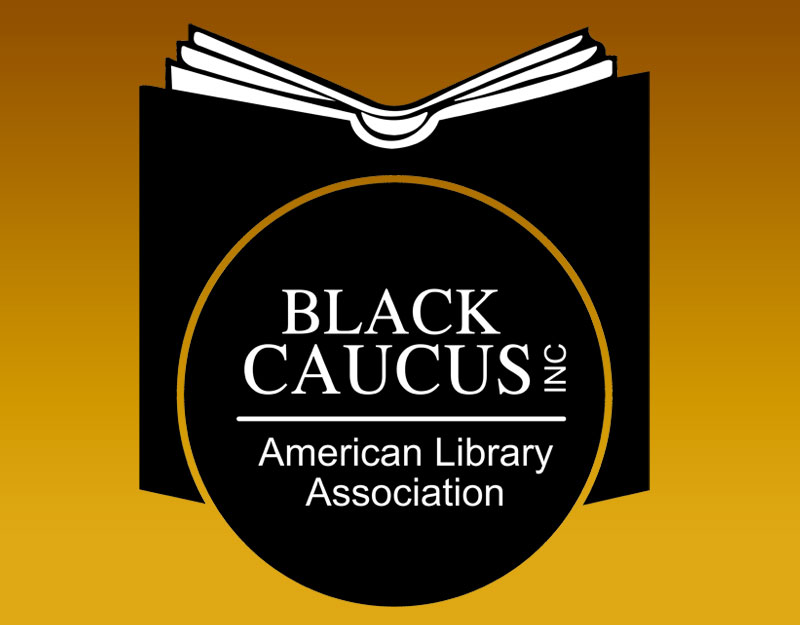

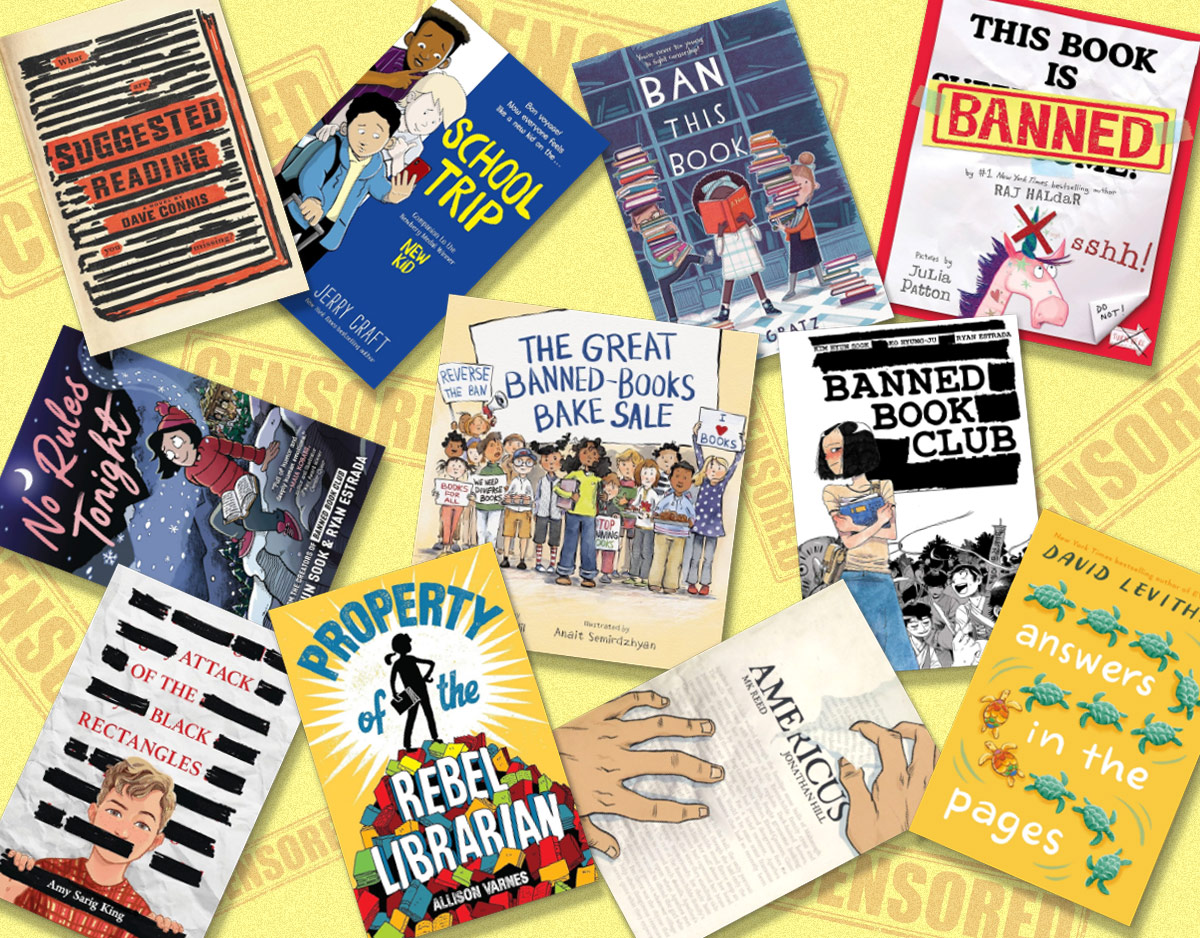
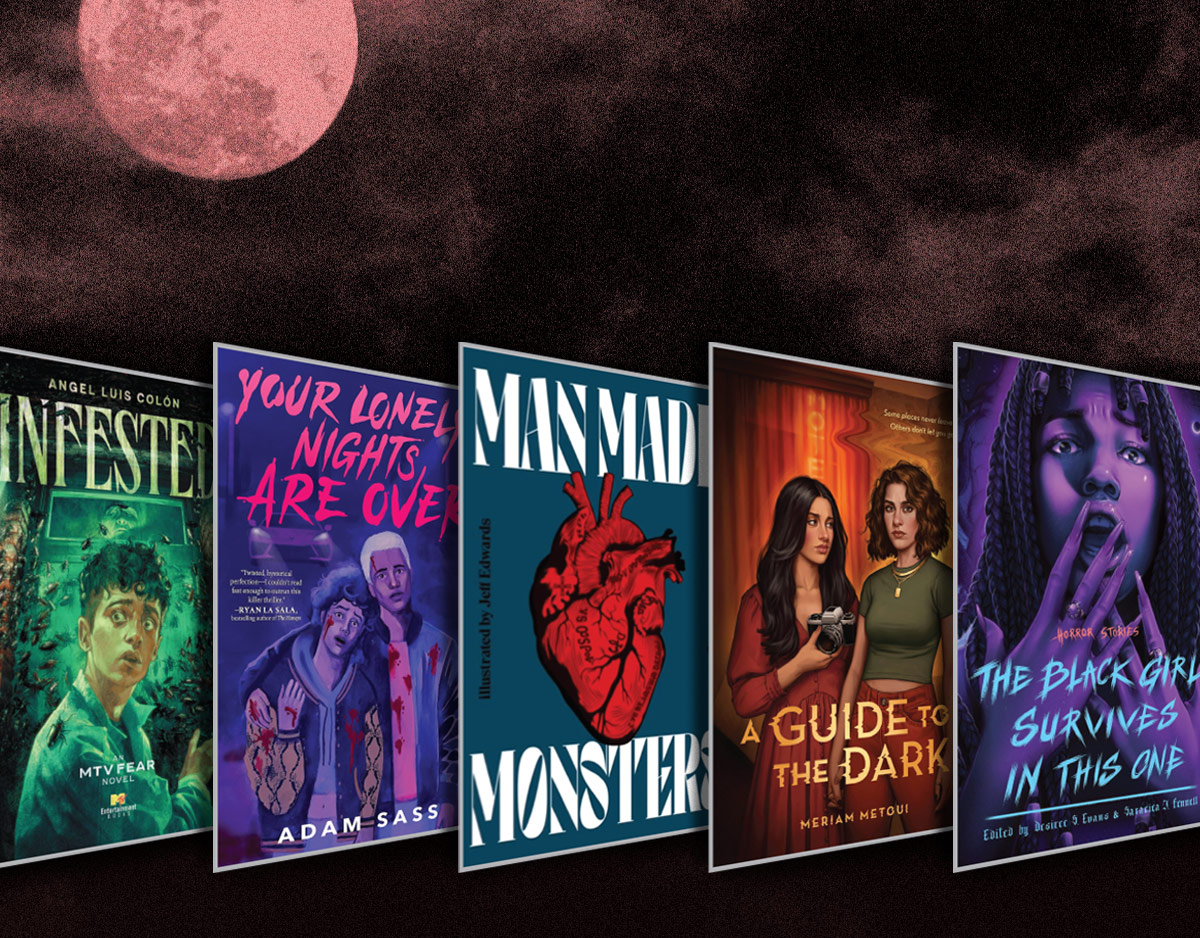
Thanks for the great, and truly diverse, choices on this list. I would like to point out that fairy tales, mythology, and folklore point out how difficult it is to be dogmatic about the concept of “cultural appropriation,” since these genres, almost by definition, prove how deep are the connections among different cultures. The same motifs are repeated, again and again, with different twists. So instead of “appropriation,” “cultural diffusion” seems more appropriate. The Cinderella stories, animals with human qualities, humanly imperfect gods, are everywhere. While the Chelm stories are particular to Jewish culture, the idea of the wise fool is not. Everyone should enjoy these books!
I’m gonna push back on that one a little. One of my favorite books is a collection from the 80s called World Tales by Idries Shah. The book essentially shows how different fairy tales have connected themes across nations and cultures, and it’s fascinating to look at them. By the same token, though I mentioned, for example, that The Fox Wife was similar in some ways to selkie tales, I would be very suspicious if someone outside the Inuit culture were to go about telling those stories without having a legitimate tie to them in some way. We white folks have a real fondness for snapping up other cultures’ stories and reworking them in our own image, and it’s only recently that we’ve seen a significant push for people from those cultures to tell their own.
It’s definitely not an either/or view of culture. Of course, there are certain perspectives that members of a culture may share which others outside their group do not. We all need to be sensitive to difference and to expect that people will share that sensitivity and respect for us. I have to question what a ‘legitimate tie” is when it comes to literature, or the other arts. There is a difference between failing to acknowledge sources, and creating a work of art which may mine the richness of different cultures. Which great works of art are pristine examples of just one source or influence? Maybe it is a case by case issue, but I am very wary of identifying art so narrowly. What happens to Picasso and his African influences? Or Moby Dick, which is a conglomeration of ingredients from innumerable sources? How about the Persian and Arabic influences on European art and literature? It’s not possible to untangle these interactions. Yes, the balance of power between the different groups does affect the equation and we need to take that into account, for example, in the case you cite of Inuit stories. I personally have read outstanding Jewish-themed books by non-Jewish authors (Jonathan Auxier’s Sweep and R.J. Palacio’s White Bird being just two examples,) and others which are awful. I have also read books by Jewish authors on Jewish themes which were undistinguished. Being culturally insensitive is a real danger, but so is judging every book principally by its author’s identity.